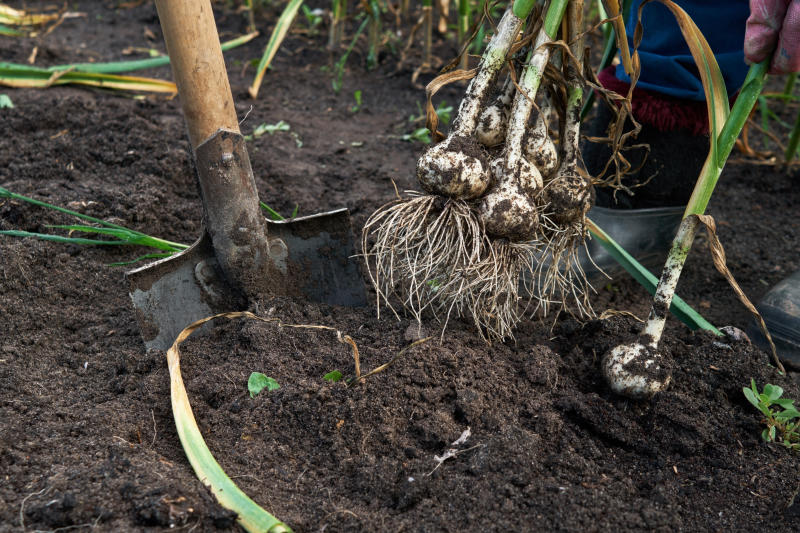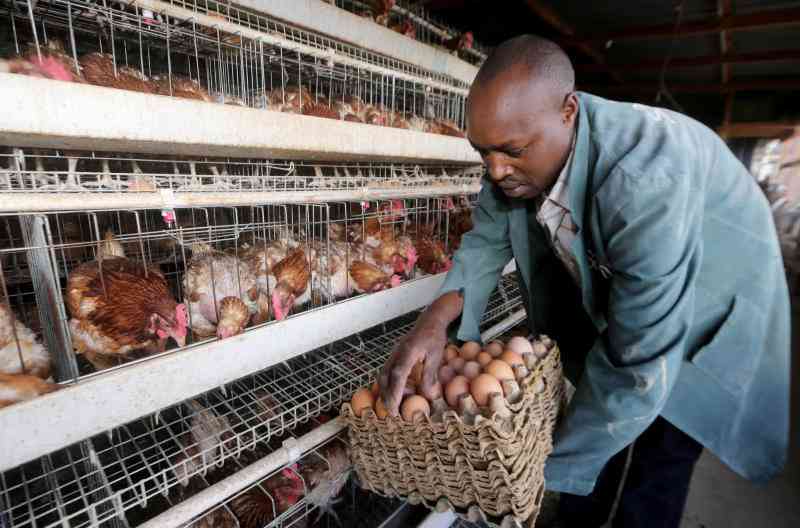
Garlic is a high-value crop closely related to onions. The demand for garlic is usually higher in the months of May, June and July. During this period, farm gate prices for one kilo is approximately Sh290 and Sh350. To plant one acre of garlic, you require approximately 100kgs of garlic cloves which costs between Sh350 and Sh400 depending on the source. One acre of land depending on your crop management yields 4,000-5,000kgs of garlic.
Select a sunny spot to plant the garlic. Garlic likes fertile, well-drained soil with a pH of 6.5 to 7. Add compost manure to improve soil fertility. Plant the cloves on raised beds for adequate drainage. Do not grow garlic in farms that have recently been planted with onion or other plants in the family of onions. Plant the cloves on raised beds.
The raised beds should be 2 to 3 feet wide and 12 inches high. Select the planting cloves carefully. Cloves bought from the market may not be appropriate for planting because they may not be suited to your area and also most of them are treated to prolong their shelf life and this could make it hard for them to germinate. Select large, healthy cloves, free of disease. The larger the clove, the bigger and healthier the bulb you will get.
In readiness for planting, separate the cloves from the bulb a few days prior to planting date. Place cloves 2 to 4 inches apart and 2 inches deep, ensure the wide root side facing down and pointed end facing up. Plant in rows spaced 10 to 14 inches apart.
To plant garlic, separate the cloves. Plant the cloves 4-6 inches apart. The spacing between rows should be approximately 1 foot apart. The cloves should be planted with the pointed end up and the blunt end down. Push each clove 1-2” into the ground, firm the soil around it, and water the bed if it is dry. Mulching the farm after planting has advantages such as preventing the garlic roots from being heaved out of the ground, prevents weeds and conserves moisture.
During the growing period, cut off any flower shoots that emerge. Failure to which, the flowers could reduce the size of the bulb. Apply nitrogen fertilizer for big bulbs. Control weeds as soon as they emerge to minimise competition for nutrients.
Garlic has very few problems with pests in the garden, in fact, it is a natural pest repellent. Also, it is affected by a few diseases. One such disease is white rot which also affects onions. White Rot is a fungus that may attack garlic in cool weather. Not much can be done to control or prevent that problem except rotating your crops and cleaning up the area after harvesting. The spores can live in the soil for many years. The fungus affects the base of the leaves and roots.
Harvesting garlic
Garlic is ready for harvesting when most of the leaves turn brown. Dig the bulbs up carefully not to cause bruising to the bulbs. Delay in harvesting will cause the bulbs to separate and this will affect the storage shelf life. After harvesting allow the bulbs to dry for 2-3 weeks under a shade. Alternatively tie the garlic in bunches, braid the leaves or cut the stem a few inches above the bulb. Hang the braids and bunches or store the loose screens or slated shelves in a cool, airy location.
[The writer is an expert on sustainable agriculture]
Want to get latest farming tips and videos?
Join Us
 The Standard Group Plc is a multi-media organization
with investments in media platforms spanning newspaper print operations,
television, radio broadcasting, digital and online services. The Standard Group
is recognized as a leading multi-media house in Kenya with a key influence in
matters of national and international interest.
The Standard Group Plc is a multi-media organization
with investments in media platforms spanning newspaper print operations,
television, radio broadcasting, digital and online services. The Standard Group
is recognized as a leading multi-media house in Kenya with a key influence in
matters of national and international interest.
 The Standard Group Plc is a multi-media organization
with investments in media platforms spanning newspaper print operations,
television, radio broadcasting, digital and online services. The Standard Group
is recognized as a leading multi-media house in Kenya with a key influence in
matters of national and international interest.
The Standard Group Plc is a multi-media organization
with investments in media platforms spanning newspaper print operations,
television, radio broadcasting, digital and online services. The Standard Group
is recognized as a leading multi-media house in Kenya with a key influence in
matters of national and international interest.








